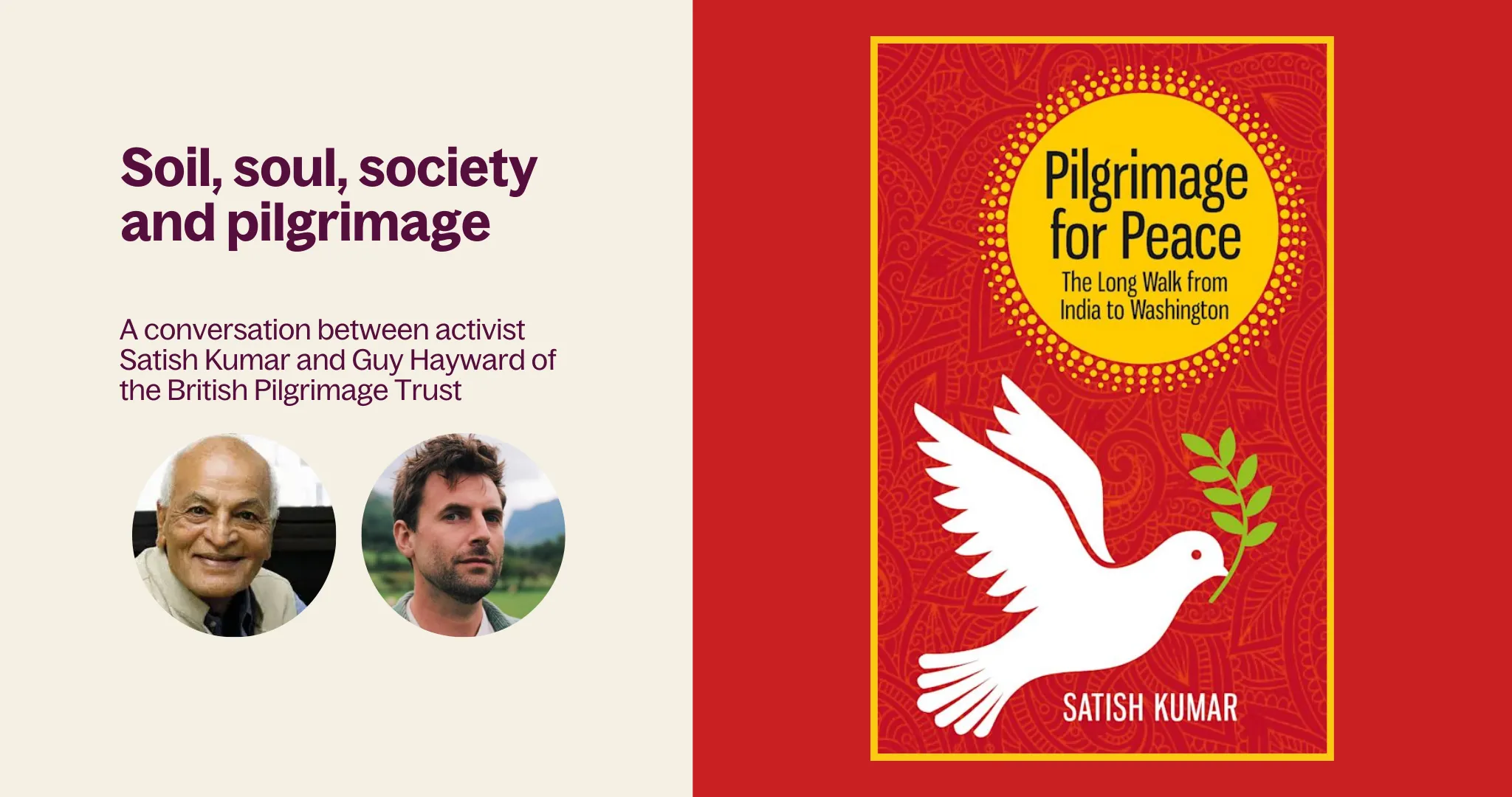Pilgrimage basics: how to turn your daily walk into a pilgrimage
31
Mar
,
2024


You may walk everyday in urban environments or in the countryside, but wherever you are there are simple, effective ways to turn your walk into a pilgrimage.
Margery Kempe, the famous medieval female pilgrim, believed strongly in the power of micro-pilgrimages of a couple of miles or less – still today there is no minimum distance for a pilgrimage. It's not about the how long, but the how.
First: the destination
First thing to do is set a destination – our Holy Places page will show you all the different categories of classic destinations – and there are many apps that show you your nearest holy place. For example:
- Megalithic — for holy wells, prehistoric stones and tumuli
- Explore Churches
- Labyrinths in Britain
- Ancient Tree Inventory
- Ancient Yew Map. and
- The National Heritage list.
Our book Britain's Pilgrim Places explores over 600 pilgrim destinations around Britain, and one of them may be very near your home.
We can't wait for you to experience the joy of discovering a pilgrim place that you never knew existed until now. The mixture of surprise and elation is unique.

Second: your intention
Second, set your intention – structure your walk around a purpose unique to you, determined by your heart and activated by your feet. All of us usually have at least one question we want answering, something we want to bring into our lives, or let go of. So choose one intention from your many options, dedicate your daily walk to that purpose, and perhaps the world around you will start to resonate with it. The intention can range from the profound to the mundane – and seeing as you can do this whenever you walk, perhaps you can experiment with different levels of profundity and see what works best for you, and in what circumstances. For example, your intention could be simply to be in a good state of mind to start your working day, so the pilgrimage therefore becomes a glorified commute looping back to your home.
The latest research in consciousness studies shows that our minds can shape our material realities. The beginning of any pilgrimage, no matter how short, is full of possibility, and by the end it has become a material fact. One way is to think of your pilgrimage as a special kind of meditation, and almost all meditation practices broadly fit into two categories – focused and open monitoring.
Focused meditation usually involves repeating a mantra, word or thought over and over, focusing the mind. Open monitoring meditation is the complete opposite, with no focus at all, instead you just actively 'monitor' the thoughts and sensations that come into your mind with no judgement – paying attention, in other words. The idea here is to create space for your mind to wander and let it solve its own problems.
This dual distinction fits very well with pilgrimage. Some people focus their pilgrimage around a particular intention, specifically meaningful to them, whereas other people don't know what intention to choose, but are open to whatever the pilgrimage brings them, and are willing to be changed by it.

Third: walk
Thirdly, and finally, your daily pilgrimage is about actually walking, being ever-present to all around you, and getting to know the land in ever greater depth: the plants, animals, birds, landscapes, skies, paths, villages, architecture, locals, strangers, stories, sounds, smells, textures, weathers. You can light a candle at a special place, put your hands in wild water that you come across, touch trees, lie down on the ground and look up at the sky, and carry a pebble that you charge with your intention as you walk.
If you are walking with others, perhaps ask for a few minutes' silent walking during your micro pilgrimage.
The archetypes of the Fool and Pilgrim are relevant to the present-moment practice of walking – both are about venturing into the unknown with open hearts and minds.
A Fool ventures into the unknown of their inner life and plays with the boundaries of acceptability, whereas a Pilgrim is about venturing into the unknown of the outer world as well as their inner life. Even walking the same route every day offers a step into the unknown if you allow it.
The Fool is often depicted as a happy-go-lucky youth with a knapsack slung on a stick over their shoulder walking, broad-grinned, over the edge of a cliff. The attitude of 'forever young' people is to wonder at everything around them, with the assumption of total possibility at all times. This will expand your perception of time.
If you can make your pilgrimage like that then you are doing very well!

Further reading
.webp)
.svg)
.svg)





_-_geograph.org.uk_-_1626228.webp)
Comments
0 Comments
Login or register to join the conversation.
Tom Jones
Lorem ipsum dolor sit amet, consectetur adipiscing elit. Suspendisse varius enim in eros elementum tristique. Duis cursus, mi quis viverra ornare, eros dolor interdum nulla, ut commodo diam libero vitae erat. Aenean faucibus nibh et justo cursus id rutrum lorem imperdiet. Nunc ut sem vitae risus tristique posuere.
Tom Jones
Lorem ipsum dolor sit amet, consectetur adipiscing elit. Suspendisse varius enim in eros elementum tristique. Duis cursus, mi quis viverra ornare, eros dolor interdum nulla, ut commodo diam libero vitae erat. Aenean faucibus nibh et justo cursus id rutrum lorem imperdiet. Nunc ut sem vitae risus tristique posuere.